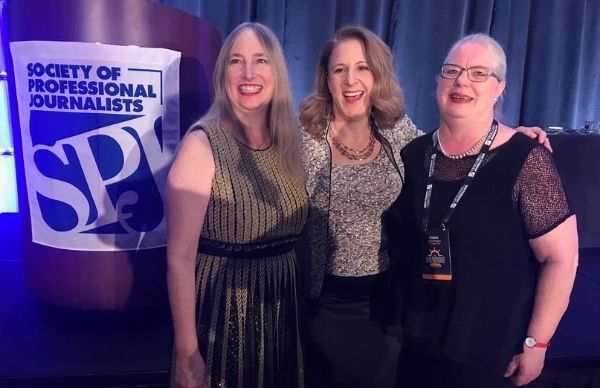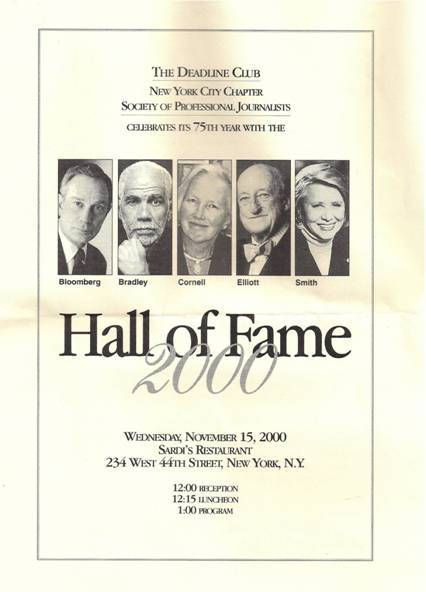
The Society of Professional Journalists was founded in 1909 at DePauw University in Greencastle, Indiana as a journalistic fraternity known as Sigma Delta Chi (SDX). Sixteen years later, a group of 50 newspapermen launched The Deadline Club, becoming one of Sigma Delta Chi’s first professional chapters. At that time, New York City had 20 daily newspapers, three wire services, eight radio stations and no television stations.

For decades, membership in SDX and The Deadline Club was by invitation only. New members were inducted in a ceremony that featured black robes, lighted alcohol lamps and a discussion of “talent, truth and energy” in its initiation ritual. The society’s motto was “He Serves Best who Serves the Truth.”
At the national level, the organization reorganized from a fraternity to a professional society in 1960. It changed its name from Sigma Delta Chi to “The Society of Professional Journalists, Sigma Delta Chi” in 1973. Finally, it became simply the “Society of Professional Journalists” in 1988, but the original fraternity is still reflected in the names of SPJ’s fundraising foundation, the Sigma Delta Chi Society, and its annual journalism contest, the Sigma Delta Chi Awards.
Both the national and local organizations accepted only male journalists as members until 1969, when that rule was abolished and female journalists, who had always been welcome at The Club’s events, were able to enjoy full membership. Marlene Sanders, a broadcasting pioneer, was the first woman sworn in as a Deadline Club member. The Club’s first female president was Kay Lockridge, a freelancer and journalism professor, in 1981.
During The Club’s critical early years, James Wright Brown, the Publisher and Chairman of Editor & Publisher, turned over his offices in the old Times tower for its meetings. In later years, The Club met in various venues and newsrooms around the city, including Columbia University, New York University, McGraw-Hill, the Overseas Press Club, the New York Power Authority and even the Central Park Zoo. The Club’s only permanent “home” was a P.O. Box in Grand Central Station. From 1998 through 2007, it formed an alliance with the National Arts Club, giving Deadline Club members dual-membership with this institution. In 2007, it ended this arrangement and formed a similar one with the Salmagundi Club. The Deadline Club’s members now enjoy full privileges at this center for American art on Fifth Avenue in Greenwich Village.

Each spring, The Club honors excellence in New York journalism at the Annual Awards Dinner at the Harvard Club of New York City. The bronze statuette bestowed on each of the winners at this event is unique to The Club. The late Rube Goldberg, known as the dean of American Cartoonists, sculpted “Deadline” for it in 1968, when he was 80 years old. Asked to comment on his creation decades ago, Goldberg said: “Deadheads, deadbeats and dead people have been presented visually over the years, but never has a dead line been shown in three dimensions. This is one of the doubtful honors to which I claim credit.” The statuette has since been dubbed a “Rube,” in honor of Goldberg.
The winners of the annual scholarship contest are announced at this event, which they are invited to attend as guests of The Club. The scholarships are funded primarily from the proceeds of the annual awards program.
The Club maintains the New York Journalism Hall of Fame and elects and inducts its members. The first class was created in 1975, as part of the golden anniversary celebration of The Club’s founding. Since then, The Club has inducted nearly 90 members into this august body.
